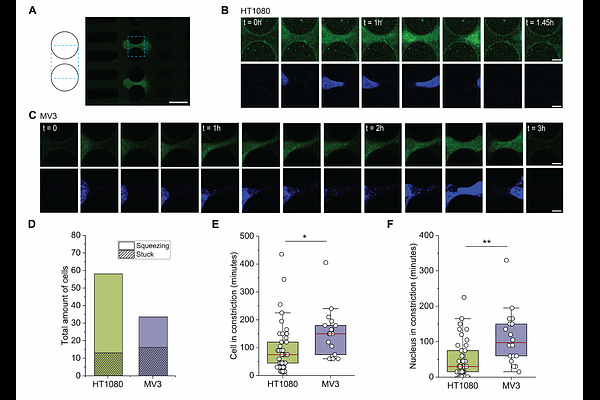Cancer cell deformability impacts the rate of confined migration but not decision making

Cancer cell deformability impacts the rate of confined migration but not decision making
van der Net, A.; Boot, R. C.; van Dijk, I.; Conboy, J. P.; Boukany, P. E.; Koenderink, G. H.
AbstractCancer cells can utilize different invasion strategies to overcome physical arrest during confined migration through tissues with small pores. Cancer cell plasticity allows switches between different migration modes and transitions between single-cell and collective migration. The biophysical parameters that guide these decisions are poorly understood. In this work we investigated the link between cell deformability and migration efficacy in constrictions of two mesenchymal cancer cell types with similar invasion strategies: HT1080 fibrosarcoma cells and MV3 melanoma cells. To this end, we designed microfluidic platforms for (1) high-throughput cell deformability measurements and (2) migration through a variety of confining geometries. We measured different deformabilities for HT1080 and MV3 cells and correlated this to their migration efficacy through confinements. However, higher deformability and improved squeezing ability did not impact decision-making at junctions of channels of different widths. Our findings show that cell deformability correlates with better squeezing abilities through confinements, but does not impact directionality decisions.